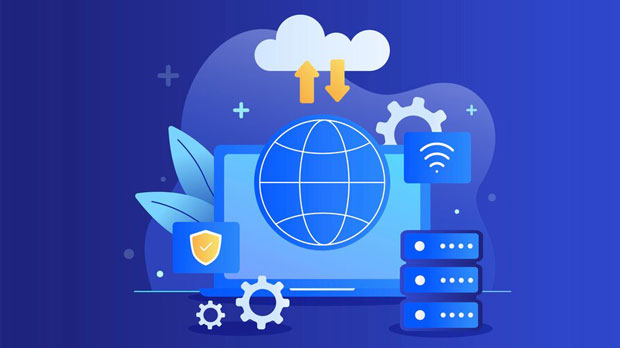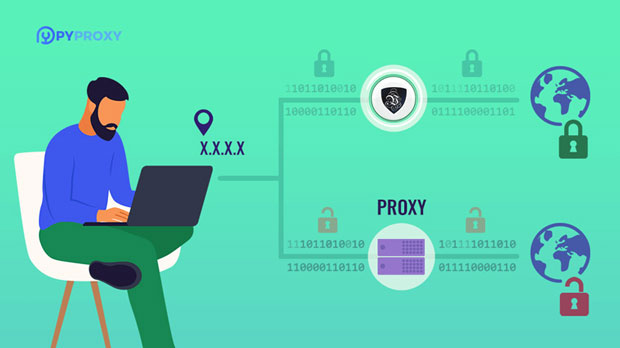In the world of internet browsing and online security, proxies play a crucial role in masking user identities, ensuring privacy, and providing secure access to various services. HTTP, HTTPS, and sock s5 proxies are among the most widely used types. While they all act as intermediaries between a user's device and the internet, their functionalities differ significantly in terms of security, performance, and the types of traffic they can handle. Understanding these differences is essential for choosing the right proxy type based on specific needs. This article will delve into the distinctions between HTTP, HTTPS, and SOCKS5 proxies, outlining their benefits, drawbacks, and practical applications. Understanding HTTP ProxiesHTTP proxies are the most basic and commonly used type of proxy. They primarily work by forwarding HTTP requests and responses between a client and a server. This means they can only handle web traffic that uses the HTTP protocol. An HTTP proxy acts as an intermediary, processing requests made by the client and sending them to the destination server, then returning the server's response back to the client.While HTTP proxies offer a level of anonymity and can help bypass geo-restrictions or access blocked websites, they come with certain limitations. Since they only work with HTTP traffic, they cannot handle encrypted traffic. As such, HTTP proxies are not suitable for secure or sensitive data transmission, as they do not provide any form of encryption or protection against data interception.One of the major advantages of using HTTP proxies is their speed and efficiency. Since they don’t deal with encryption, they often have lower latency and faster response times compared to other proxy types, making them ideal for activities like web scraping or accessing unencrypted websites.Exploring HTTPS ProxiesHTTPS proxies, as the name suggests, are designed to handle secure, encrypted traffic that uses the HTTPS protocol. Unlike HTTP proxies, HTTPS proxies are capable of providing a secure, encrypted connection between the client and the server. When data is transmitted over an HTTPS proxy, the communication is encrypted using SSL/TLS, which ensures that sensitive information, such as passwords and personal data, remains protected.The primary advantage of HTTPS proxies is their ability to safeguard users' privacy by providing end-to-end encryption. This makes them suitable for browsing secure websites, online shopping, and banking, as well as any activity that requires data protection. HTTPS proxies are also better equipped to bypass censorship filters or firewalls that block HTTP traffic but allow secure HTTPS traffic.However, HTTPS proxies are slightly slower than HTTP proxies due to the encryption process. The need for SSL/TLS handshakes and data encryption adds overhead, which can result in a slight decrease in performance, especially in high-latency environments.One potential drawback of HTTPS proxies is that they are not fully anonymous. While they protect the data transmitted between the client and the server, the proxy server itself still knows the source and destination of the traffic. This means that the user's IP address may still be visible to the proxy server and any third parties who monitor the server's activities.The Power of SOCKS5 ProxiesSOCKS5 proxies are more versatile than both HTTP and HTTPS proxies. Unlike HTTP or HTTPS proxies, which are specifically designed to handle web traffic, SOCKS5 proxies can handle a variety of internet protocols, including HTTP, FTP, SMTP, and even P2P traffic like torrents. This makes SOCKS5 proxies more flexible and suitable for a wider range of applications, such as online gaming, file sharing, and accessing different types of services.SOCKS5 proxies also offer better security compared to HTTP proxies, as they can handle encrypted traffic. They do not modify the data in transit, meaning they do not interfere with the packets being sent between the client and the server. This makes SOCKS5 proxies less likely to cause issues with certain types of applications, such as those that require specific protocols to function correctly.One of the key benefits of SOCKS5 proxies is their ability to offer a high level of anonymity. Since they do not modify the traffic or store data, they do not reveal any information about the client's online activities. This makes them a great choice for users who prioritize privacy and anonymity.Additionally, SOCKS5 proxies support authentication, meaning that users can set up a username and password to gain access to the proxy service. This adds an extra layer of security, ensuring that only authorized users can use the proxy.However, the primary downside of SOCKS5 proxies is their performance. While they offer a high level of flexibility and security, they can be slower than both HTTP and HTTPS proxies, particularly when handling large volumes of traffic. The lack of encryption in some cases (especially for non-HTTPS traffic) may also leave the data vulnerable to interception.Key Differences Between HTTP, HTTPS, and SOCKS5 ProxiesTo better understand the practical applications of these proxies, let's break down the key differences between HTTP, HTTPS, and SOCKS5 proxies:1. Protocol Support: - HTTP proxies are limited to handling only HTTP traffic, making them unsuitable for encrypted traffic. - HTTPS proxies handle secure HTTPS traffic, offering encryption and data protection for sensitive information. - SOCKS5 proxies are more versatile, handling a range of protocols beyond HTTP, such as FTP, SMTP, and P2P, making them ideal for users with diverse needs.2. Security: - HTTP proxies offer minimal security, as they do not encrypt traffic or protect sensitive data. - HTTPS proxies provide encryption via SSL/TLS, ensuring secure communication, but they are not fully anonymous. - SOCKS5 proxies provide enhanced anonymity and can handle encrypted traffic, making them more secure than HTTP proxies, although they may lack encryption for non-HTTPS traffic.3. Performance: - HTTP proxies are the fastest option since they do not deal with encryption overhead. - HTTPS proxies are slightly slower due to the need for SSL/TLS encryption, but the difference in speed is often negligible for everyday browsing. - SOCKS5 proxies tend to be slower than HTTP proxies, especially when handling large volumes of traffic or more complex protocols.4. Use Cases: - HTTP proxies are ideal for tasks like web scraping and accessing unencrypted websites. - HTTPS proxies are better for secure browsing, online banking, and other activities that require data protection. - SOCKS5 proxies are the best option for users who need a flexible, secure, and anonymous solution for a wide range of internet activities.Conclusion: Choosing the Right ProxyThe decision to use an HTTP, HTTPS, or socks5 proxy largely depends on the specific needs and priorities of the user. If speed is of the essence and security is not a primary concern, HTTP proxies may be the best choice. For users who need secure communication for online transactions or browsing, HTTPS proxies offer the necessary encryption. However, for those who require a versatile, secure, and anonymous solution, SOCKS5 proxies stand out as the most flexible and secure option, though they may come with a slight performance trade-off.Ultimately, understanding the unique features and limitations of each proxy type will allow users to make an informed decision based on their online privacy and performance needs.
Apr 02, 2025
![arrow]()




























































